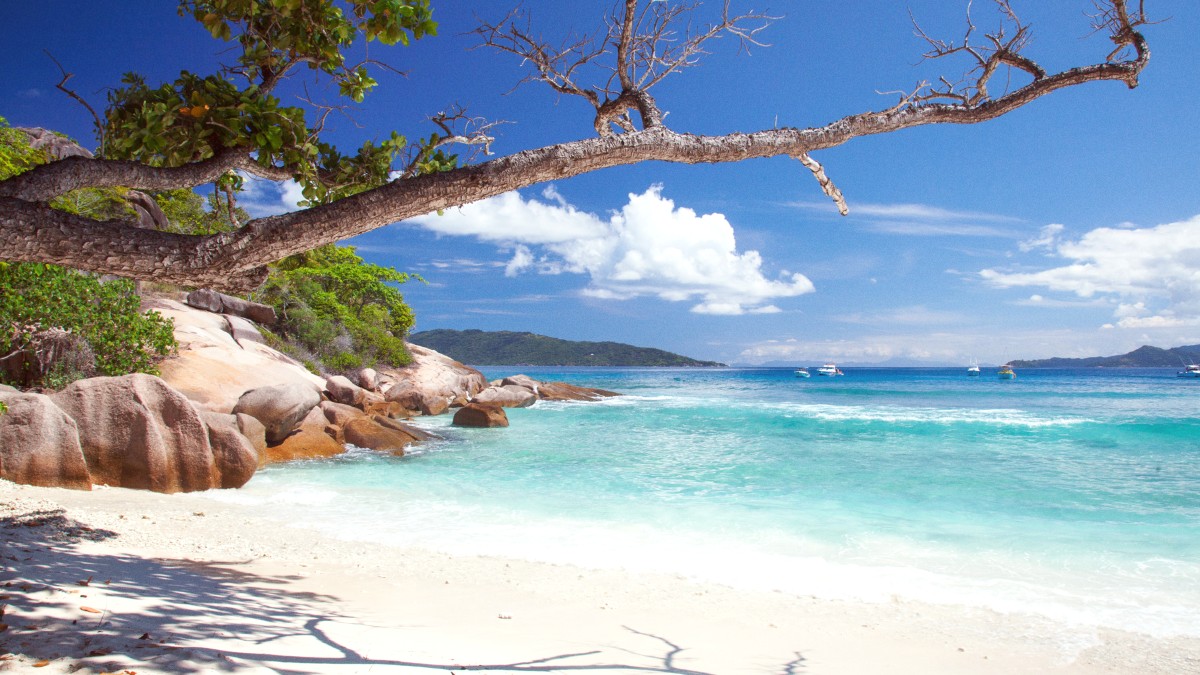
Seychelles
Praslin sits within the Indian Ocean, a central part of the Seychelles. It lies approximately 45 kilometers (28 miles) northeast of Mahé, the largest island and home to the international airport. Praslin spans about 38 square kilometers (15 square miles). Its geography shapes the travel experience. Lush hills cover much of the interior, giving way to dense palm forests and the island's famous beaches. These beaches range from long, sweeping stretches of sand to more intimate coves nestled between granite formations.
The island's location makes it an useful base for exploring other nearby islands. From Praslin, La Digue, known for its iconic beaches and car-free environment, is an easy reach. Curieuse Island, a marine park with giant tortoises, sits a short boat ride away.
Cousin Island, a protected bird sanctuary, also sits within easy reach. This central position simplifies island hopping, allowing experience of the diverse beauty of the inner Seychelles islands without extensive travel. The relatively short distances between islands mean less time in transit and more time enjoying surroundings.
Explorer Lazare Picault charted the island in 1744, naming it Île de Palmes, or "Isle of Palms." This name reflected the abundance of its unique Coco de Mer palms. These palms, with their distinctive double-lobed nuts, were a source of fascination for early European visitors, often mistaken for a mythical sea fruit. The nuts washed up on distant shores, leading to legends and mysteries about their origin.
In 1768, France formally claimed the island and renamed it Praslin. This renaming honored Gabriel de Choiseul, Duc de Praslin, a French Minister of Foreign Affairs. French settlers began arriving, bringing African slaves who worked on plantations. This early settlement laid the foundation for the diverse Creole culture that thrives in Seychelles today, blending African, European, and later, Asian influences.
Its rarity and unusual appearance sparked scientific and conservation interest.
Recognition of its importance led to the Vallée de Mai Nature Reserve.
The reserve preserves the ancient palm forest and its endemic species.
It provides a protected home for the Coco de Mer and the black parrot.
The Coco de Mer's story mirrors Praslin's journey from mythical to ecological marvel.
Praslin's past is not marked by grand colonial buildings or expansive historical ruins. Instead, its history lives in its forests, its cultural blend, and the stories of its people. The island's development focused on sustainable tourism and conservation, aiming to protect its natural heritage for future generations.
Visitors today trace this history by exploring the Vallée de Mai, observing the Coco de Mer in its natural environment, and experiencing the calm, welcoming atmosphere that has characterized the island for centuries.
The blend of discovery, colonial influence, and conservation efforts shapes Praslin's identity.
Choose Praslin for a more intimate Seychelles experience. It presents natural beauty without the bustle of a major city.
Praslin offers a compact yet diverse travel experience, making it a favorite for many Seychelles visitors. Here is a quick overview of what to expect:
The island’s charm lies in its ability to present both iconic sights and quiet moments. Prepare for enchantment by its unique palms, clear waters, and the warmth of its people.
Vallée de Mai and Fond Ferdinand Nature Reserve offer unique ecological sights and rare birds.
Anse Lazio, Anse Georgette, and Cote d'Or headline the island's picturesque coastlines.
Praslin serves as a perfect launchpad for day trips to La Digue, Curieuse, and St. Pierre Islet.
Praslin operates at a slower speed than Mahé, creating a calm environment for relaxation. Travelers enjoy quiet evenings and tranquil days. Experience local Seychellois Creole culture through its cuisine, friendly locals, and relaxed island lifestyle. Local takeaways offer authentic flavors at reasonable prices.